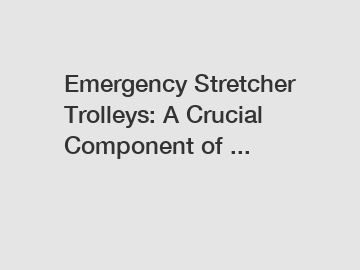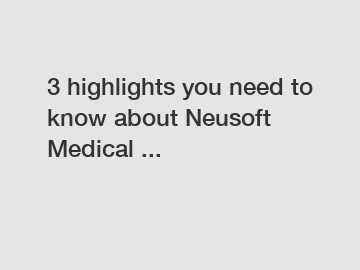Aluminium profile types – an overview of the differences - Blog
Aluminium profile types – an overview of the differences - Blog
Understanding the differences and selecting the best aluminium profiles &#; find out which type is most appropriate for your specific project.
The company is the world’s best supplier aluminium profile supplier. We are your one-stop shop for all needs. Our staff are highly-specialized and will help you find the product you need.
Screws instead of welds, aluminium instead of steel! This was the revolutionary idea of the two founders of item, Gerrit Pies and Wolfgang Rixen, that kicked off the success story of the modular item Building Kit System for aluminium profiles in . The benefits are low weight combined with maximum stability, rapid assembly thanks to innovative fastening technology, cost savings compared to steel and decisive flexibility. All these advantages are currently available across more than 4,500 mutually compatible components &#; and the range is continuously expanding. What&#;s more, the anodized aluminium profiles from item have inclined groove flanks. When fasteners are used in the groove, the groove flanks press against the fasteners in the elastic range, creating additional pre-tensioning that ensures the fasteners are even more secure. When it comes to vibrations in a machine base, for example, this represents a key advantage. These days, the modular profile technology from item is used in all kinds of projects by engineers around the world, ranging from simple frames to fully automated production lines.
However, what types of item aluminium profiles are there? What are the differences between them? And which aluminium profile is best used to meet which requirements? This post addresses these questions for newcomers to the world of item. In addition to the &#;classic&#; aluminium profiles, that is to say, the construction profiles, there are also other types &#; Line X and the profile tubes of Profile Tube System D30. Profile KH, on the other hand, offers a metal-free, sustainable alternative to aluminium profiles, and is also used for EMC applications. You&#;ll find more information about this special profile in an interview on our blog.
Differences at a glance: Aluminium profile types and their primary characteristics
The aluminium item construction profiles can be divided into five different types (item calls these lines): Line 5, 6, 8, 10 and 12. These different aluminium profiles are designed to meet different user requirements. Three geometric characteristics help to meet different needs, and all the lines differ in respect of the following:
- Modular dimension: Each line is based on mostly square profiles with an external dimension of 20, 30, 40, 50 or 60 mm. Continuous grooves run along all four sides.
- Groove dimension: The size and load-carrying capacity of the groove increase in line with the modular dimension. Most profile connections are anchored in the groove. The groove also serves as an anchor point for panel elements.
- Bore diameter: The core bore offers a stable fastening point at the end faces of the aluminium profiles. This bore can be used as a basis for subsequently tapping a thread.
In addition, there are different designs within the lines: Standard, Light and Economy. &#;Standard&#; speaks for itself. &#;Light&#; profiles are lightweight, while &#;Economy&#; profiles have a material-optimised design. In each of the two latter designs, the maximum tensile loading of the profiles is reduced. One particularly practical feature is the profile deflection calculator available alongside each aluminium profile in the item Online Shop.
It must be noted, however, that not every aluminium profile is available in all three designs. Fundamentally, item aluminium profiles are always described using the following pattern, in the item Online Shop, for example. Profile 8 40×40 1N light, natural. These descriptions can be deciphered as follows:
Compact aluminium profiles for precision work &#; Line 5
Line 5 aluminium profiles with a modular dimension of 20 mm are ideal for weight-optimised constructions of all kinds. Line 5 profiles can be used to create refined, stable and flexible applications. The small exterior dimensions make these profiles particularly well suited for space-saving and compact jigs, covers and handling equipment. Their low material consumption also mean they conserve resources. Line 5 aluminium profiles are available with open or closed grooves. A closed groove eliminates the problem of dirt accumulation in grooves.
The lightweight alternative: Line 6 aluminium profiles
Line 6 profiles with a modular dimension of 30 mm are ideal for all kinds of weight-optimised constructions. Using these aluminium profiles makes it easy to adapt the use of materials to the task at hand and rely on a slimline, robust design. Again, open or closed grooves can be used. The latter are easy to clean and also have a particularly elegant aesthetic. Line 6 profiles create functional and attractive display cases, tables and cover hoods.
Universal and robust all-rounder: Line 8
Line 8 profiles with a modular dimension of 40 mm are the most frequently used of all the item aluminium profiles worldwide. Their great versatility makes Line 8 profiles the perfect choice for machines and systems of all sizes. Thanks to their design, these aluminium profiles are light and robust, offering a wide range of uses with a service life of many years. This robust aluminium profile for load-optimised constructions is available with open or closed grooves. Profiles with closed grooves are particularly easy to clean and can be combined with conventional profiles as required. Line X (more about this further down) uses the Line 8 profile groove.
Increased load-carrying capacity for robust constructions: Line 10
Line 10 profiles with a modular dimension of 50 mm are ideal for load-bearing profile constructions. The 10 mm groove width makes it possible to work with accessories with thread size M10. This increased load-carrying capacity can be fully utilised thanks to the strong groove flanks. The fasteners also play a part in this. All Fastening Sets 10 consist entirely of high-performance steels so that pre-tensioning is always available in full. As a result, there is reliable protection from loss of preload. The maximum permissible load-bearing capacity is N. Various different cross-sections are available for Line 10 aluminium profiles. The weight-optimised Profiles 10 E can be used in areas involving lower loads. The end faces and the grooved sides of the aluminium profiles can be closed using matching plastic caps and cover profiles.
The robust option for load-carrying applications: Line 12 aluminium profiles
When it comes to creating stable, heavy-duty frame structures, Line 12 profiles with a modular dimension of 60 mm are the ideal choice. This is the strongest profile line in the item Building Kit System. Thanks to the strength of the profile flanks, tensile loading of up to 10,000 N per screw connection is possible. What&#;s more, the incline of the aluminium groove flanks down into the groove ensures excellent resistance to loss of preload. If areas of the basic frame are only placed under lower stress, the light version of Line 12 can be used.
Optimised form for elegance and cleanliness: Line X
Constructions based on Line X exhibit the best possible combination of elegance and cleanliness. A minimised edge radius results in a seamless connection between the profiles, with no protruding edges. This produces constructions that are easy to clean, where dirt and deposits have no chance of accumulating. These aluminium profiles are therefore perfect for building machines and systems that need to be kept spotlessly clean. Line X aluminium profiles are available with open or closed grooves. The variants of Line X profiles with closed grooves are ideal for use in cleanroom production.
Profile tubes for lean factory equipment: Profile Tube System D30
Alongside construction profiles, profile tubes are another popular type of aluminium profile. Profile Tube System D30 has been specifically designed to meet the requirements of the fast, sophisticated and solution-oriented factory equipment engineering typical of lean production. The system&#;s (Profile) Tubes D30 can easily be cut to the desired length and connected using fasteners. Up to four fasteners can be connected to the same intersection point on a Profile Tube.
A special geometry is what makes the aluminium profile tubes so efficient. Four slimline, undercut flanks are enveloped by Fastener D30. Depending on the direction, the fastener is mechanically locked, but its connection is friction-based in the main load direction.
See also:
Discover the Top 5 Benefits of a Hospital Bed at Home
Economic Aspects of the Artificial Limb Industry
Conquer These OCT Technology Choices and Challenges
Who is the largest manufacturer of surgical instruments?
Revolutionizing fitness: the axis the joint! What's the best workout for joint health?
What are the different types of prosthetic feet?
Revolutionizing Recovery: Orthopedic Vacuum Pump Therapy?Contact us to discuss your requirements of aluminium door profiles suppliers. Our experienced sales team can help you identify the options that best suit your needs.
A special geometry is what makes the aluminium profile tubes so efficient. Four slimline, undercut flanks are enveloped by Fastener D30. Depending on the direction, the fastener is mechanically locked, but its connection is friction-based in the main load direction. Struts can be attached separately on each of the four sides. One person working with a single tool can make all the necessary connections. The five colours of Profile Tubes D30 provide quick orientation and help to clearly differentiate between areas or frames. The silk-matt powder-coating is abrasion resistant, and the anodized Profile Tube D30 and the black powder-coated Profile Tube are both ESD-safe. There are three standard lengths for the anodized Profile Tube D30 &#; , and mm. Alternatively, a custom cut-off that has been sawn to size with millimetre precision can be ordered.
Want to keep up to date with everything that&#;s going on in the world of item? Simply subscribe to the item blog by completing the box at the top right.
A Comprehensive Guide to Choosing the Right T-slot ...
T-slot aluminum profiles, often referred to as the &#;industrial Meccano set,&#; provide a flexible and adaptable solution for a wide variety of framing applications. Boasting a clever design with slots running along the face of the extrusion, these profiles can accommodate various nuts, connectors, and accessories, making them suitable for countless projects. Manufactured from -T5 aluminum and anodized for a durable finish, T-slot aluminum profiles are built to last.
Our T-slot aluminum profiles are available in five main categories: 20 series, 30 series, 40 series, 45 series, and 50 series. Each series is designed to cater to different project requirements, ensuring that you can find the perfect fit for your needs.
Basic Structure and Components of T-slot Aluminum Profiles: T-slot profiles consist of several key components:
Extrusion: The core structure, typically featuring a square or rectangular cross-section with T-shaped slots running along the sides. The size and configuration of these slots determine the profile&#;s compatibility with accessories and fasteners.
T-nuts: These special nuts are designed to slide into the T-shaped slots, providing a secure anchor point for attaching accessories, panels, or other profiles.
Fasteners and connectors: A variety of fasteners (such as screws, bolts, or brackets) and connectors (like angle brackets or joining plates) are available to secure profiles together or attach accessories, creating a robust and customizable structure.
Types of Connections and Fasteners in T-slot Systems: When assembling T-slot aluminum profiles, you can choose from several types of connections and fasteners:
End-to-end connections: These connections involve joining two profiles at their ends, often using a connecting plate, linear joiners or brackets, and appropriate T-nuts and fasteners.
T-connections: T-connections allow one profile to connect perpendicularly to another, forming a &#;T&#; shape. These connections are typically achieved using a standard connection, T-nuts, bolts, and specialized brackets.
L-connections: Similar to T-connections, L-connections involve joining two profiles at a right angle. They use a standard connection, corner brackets, T-nuts, and fasteners to secure the profiles together.
Cross-connections: These connections join profiles in an &#;X&#; or &#;+&#; configuration, usually with a specialized cross connector, T-nuts, and fasteners.
By understanding the basic structure and components of T-slot aluminum profiles, as well as the various types of connections and fasteners, you&#;ll be well-prepared to select the perfect profile size and assemble your custom framing solution with ease.
Are you interested in learning more about hospital room door? Contact us today to secure an expert consultation!
Top Diabetic Footwear Options for Men
The Ultimate Guide to Prosthetic Components: Top FAQs Answered!
Revolutionizing Recovery: Are Ankle Knee Foot Orthosis a Game Changer?
Find Quality Lower Limb Prosthesis for Sale - Your Complete Guide!
Low-Cost Retinal Scanner Could Help Prevent Blindness ...
How to Save Money When Buying Indocyanine Green Angiography
Military-funded prosthetic technologies benefit more than ...









